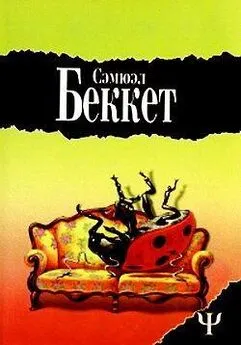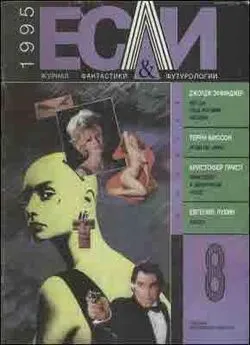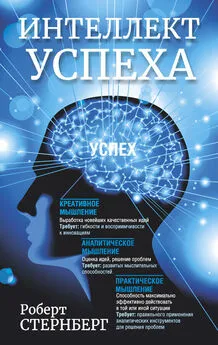Сэмюел Стернберг - Трещина в мироздании [litres]
- Название:Трещина в мироздании [litres]
- Автор:
- Жанр:
- Издательство:Литагент Corpus
- Год:2019
- Город:Москва
- ISBN:978-5-17-109309-9
- Рейтинг:
- Избранное:Добавить в избранное
-
Отзывы:
-
Ваша оценка:
Сэмюел Стернберг - Трещина в мироздании [litres] краткое содержание
Трещина в мироздании [litres] - читать онлайн бесплатно ознакомительный отрывок
Интервал:
Закладка:
W. Saletan, “Don’t Fear the Frankenfish”, Slate , November 20, 2015, www.slate.com/articles/health_and_science/science/2015/11/genetically_engineered_aquabounty_salmon_safe_fda_decides.html.
122
A. Kopicki, “Strong Support for Labeling Modified Foods”, New York Times , July 27, 2013.
123
Friends of the Earth, “ FDA’s Approval of GMO Salmon Denounced ”, www.foe.orgfdas-approval-of-gmo-salmon-denounced/news/news-releases/2015-11-.
124
K. Saeki et al., “Functional Expression of a Delta12 Fatty Acid Desaturase Gene from Spinach in Transgenic Pigs”, Proceedings of the National Academy of Sciences of the United States of America 101 (2004): 6361–6666.
125
S. P. Golovan et al., “Pigs Expressing Salivary Phytase Produce Low-Phosphorus Manure”, Nature Biotechnology 19 (2001): 741–745.
126
C. Perkel, “University of Guelph ‘Enviropigs’ Put Down, Critics Blast ‘Callous’ Killing”, Huffington Post Canada , June 21, 2012.
127
R. Kambadur et al., “Mutations in Myostatin (GDF8) in Double-Muscled Belgian Blue and Piedmontese Cattle”, Genome Research 7 (1997): 910–916.
128
A. C. McPherron, A. M. Lawler, and S. J. Lee, “Regulation of Skeletal Muscle Mass in Mice by a New TGF-β Superfamily Member”, Nature 387 (1997): 83–90.
129
A. Clop et al., “A Mutation Creating a Potential Illegitimate microRNA Target Site in the Myostatin Gene Affects Muscularity in Sheep”, Nature Genetics 38 (2006): 813–818.
130
D. S. Mosher et al., “A Mutation in the Myostatin Gene Increases Muscle Mass and Enhances Racing Performance in Heterozygote Dogs”, PLoS Genetics 3 (2007): e79.
131
M. Schuelke et al., “Myostatin Mutation Associated with Gross Muscle Hypertrophy in a Child”, New England Journal of Medicine 350 (2004): 2682–2688.
132
E. P. Zehr, “The Man of Steel, Myostatin, and Super Strength”, Scientific American , June 14, 2013.
133
L. Qian et al., “Targeted Mutations in Myostatin by Zinc-Finger Nucleases Result in Double-Muscled Phenotype in Meishan Pigs”, Scientific Reports 5 (2015): 14435.
134
X. Wang et al., “Generation of Gene-Modified Goats Targeting MSTN and FGF5 via Zygote Injection of CRISPR/Cas9 System”, Scientific Reports 5 (2015): 13878.
135
S. Reardon, “Welcome to the CRISPR Zoo”, Nature News , March 9, 2016.
136
A. Harmon, “Open Season Is Seen in Gene Editing of Animals”, New York Times , November 26, 2015.
137
C. Whitelaw et al., “Genetically Engineering Milk”, Journal of Dairy Research 83 (2016): 3–11.
138
D. J. Holtkamp et al., “Assessment of the Economic Impact of Porcine Reproductive and Respiratory Syndrome Virus on United States Pork Producers”, Journal of Swine Health and Production 21 (2013): 72–84.
139
K. M. Whitworth et al., “Use of the CRISPR/Cas9 System to Produce Genetically Engineered Pigs from In Vitro-Derived Oocytes and Embryos”, Biology of Reproduction 91 (2014): 1–13.
140
K. M. Whitworth et al., “Gene-Edited Pigs Are Protected from Porcine Reproductive and Respiratory Syndrome Virus”, Nature Biotechnology 34 (2016): 20–22.
141
Center for Food Security and Public Health, “African Swine Fever”, www.cfsph.iastate.edu / Factsheets / pdfs / african_swine_fever.pdf.
142
C. J. Palgrave et al., “Species-Specific Variation in RELA Underlies Differences in NF-κB Activity: A Potential Role in African Swine Fever Pathogenesis”, Journal of Virology 85 (2011): 6008–6014.
143
S. G. Lillico et al., “Mammalian Interspecies Substitution of Immune Modulatory Alleles by Genome Editing”, Scientific Reports 6 (2016): 21645.
144
H. Devlin, “Could These Piglets Become Britain’s First Commercially Viable GM Animals?”, Guardian , June 23, 2015.
145
B. Graf and M. Senn, “Behavioural and Physiological Responses of Calves to Dehorning by Heat Cauterization with or Without Local Anaesthesia”, Applied Animal Behaviour Science 62 (1999): 153–171.
146
I. Medugorac et al., “Bovine Polledness – an Autosomal Dominant Trait with Allelic Heterogeneity”, PLoS ONE 7 (2012): e39477.
147
D. F. Carlson et al., “Production of Hornless Dairy Cattle from Genome-Edited Cell Lines”, Nature Biotechnology 34 (2016): 479–481.
148
K. Grens, “GM Calves Move to University”, Scientist , December 21, 2015.
149
N. Rosenthal and Steve Brown, “The Mouse Ascending: Perspectives for Human-Disease Models”, Nature Cell Biology 9 (2007): 993–999; www.findmice.org / repository .
150
B. Shen et al., “Generation of Gene-Modified Cynomolgus Monkey via Cas9/RNA-Mediated Gene Targeting in One-Cell Embryos”, Cell 156 (2014): 836–843.
151
H. Wan et al., “One-Step Generation of p53 Gene Biallelic Mutant Cynomolgus Monkey via the CRISPR/Cas System”, Cell Research 25 (2015): 258–261.
152
Y. Chen et al., “Functional Disruption of the Dystrophin Gene in Rhesus Monkey Using CRISPR/Cas9”, Human Molecular Genetics 24 (2015): 3764–3774.
153
Z. Tu et al., “CRISPR/Cas9: A Powerful Genetic Engineering Tool for Establishing Large Animal Models of Neurodegenerative Diseases”, Molecular Neurodegeneration 10 (2015): 35–42; Z. Liu et al., “Generation of a Monkey with MECP2 Mutations by TALEN-Based Gene Targeting”, Neuroscience Bulletin 30 (2014): 381–386.
154
C. Sheridan, “FDA Approves ‘Farmaceutical’ Drug from Transgenic Chickens”, Nature Biotechnology 34 (2016): 117–119.
155
L. R. Bertolini et al., “The Transgenic Animal Platform for Biopharmaceutical Production”, Transgenic Research 25 (2016): 329–343.
156
J. Peng et al., “Production of Human Albumin in Pigs Through CRISPR/Cas9-Mediated Knockin of Human cDNA into Swine Albumin Locus in the Zygotes”, Scientific Reports 5 (2015): 16705.
157
D. Cooper et al., “The Role of Genetically Engineered Pigs in Xenotransplantation Research”, Journal of Pathology 238 (2016): 288–299.
158
U. S. Department of Health and Human Services, “The Need Is Real: Data”, www.organdonor.gov/about/data.html.
159
L. Yang et al., “Genome-Wide Inactivation of Porcine Endogenous Retroviruses (PERVs)”, Science 350 (2015): 1101–1104.
160
A. Regalado, “Surgeons Smash Records with Pig-to-Primate Organ Transplants”, MIT Technology Review , August 12, 2015.
161
D. Cyranoski, “Gene-Edited ‘Micropigs’ to Be Sold as Pets at Chinese Institute”, Nature News , September 29, 2015.
162
X. Wang et al., “One-Step Generation of Triple Gene-Targeted Pigs Using CRISPR/Cas9 System”, Scientific Reports 6 (2016): 20620.
163
Cyranoski, “ Gene-Edited ‘Micropigs.’ ”
164
C. Maldarelli, “Although Purebred Dogs Can Be Best in Show, Are They Worst in Health?”, Scientific American , February 21, 2014.
165
Q. Zou et al., “Generation of Gene-Target Dogs Using CRISPR/Cas9 System”, Journal of Molecular Cell Biology 7 (2015): 580–583.
166
A. Regalado, “First Gene-Edited Dogs Reported in China”, MIT Technology Review , October 19, 2015.
167
A. Martin et al., “CRISPR/Cas9 Mutagenesis Reveals Versatile Roles of Hox Genes in Crustacean Limb Specification and Evolution”, Current Biology 26 (2016): 14–26.
168
M. Evans, “Could Scientists Create Dragons Using CRISPR Gene Editing?”, BBC News , January 3, 2016.
169
R. A. Charo and H. T. Greely, “CRISPR Critters and CRISPR Cracks”, American Journal of Bioethics 15 (2015): 11–17.
170
B. Switek, “How to Resurrect Lost Species”, National Geographic News , March 11, 2013; S. Blakeslee, “Scientists Hope to Bring a Galápagos Tortoise Species Back to Life”, New York Times , December 14, 2015.
171
J. Folch et al., “First Birth of an Animal from an Extinct Subspecies ( Capra pyrenaica pyrenaica ) by Cloning”, Theriogenology 71 (2009): 1026–1034.
172
Один из ископаемых видов мамонта, Mammuthus primigenius ( примеч. науч. ред. ).
173
K. Loria and D. Baer, “Korea’s Radical Cloning Lab Told Us About Its Breathtaking Plan to Bring Back the Mammoth”, Tech Insider , September 10, 2015.
174
V. J. Lynch et al., “Elephantid Genomes Reveal the Molecular Bases of Woolly Mammoth Adaptations to the Arctic”, Cell Reports 12 (2015): 217–228.
175
J. Leake, “Science Close to Creating a Mammoth”, Sunday Times , March 22, 2015.
176
B. Shapiro, “Mammoth 2.0: Will Genome Engineering Resurrect Extinct Species?”, Genome Biology 16 (2015): 228–230.
177
Тундра – один из биотопов, хранящих и выделяющих наибольшее количество метана – одного из парниковых газов. Чтобы замедлить глобальное потепление, надо снизить выбросы метана и других соединений углерода в атмосферу. По геологическим данным, тундростепи, которые во времена мамонтов и других гигантских млекопитающих располагались на месте нынешней тундры, не так “метаногенны” – и, видимо, именно крупные звери формировали этот ландшафт. Российские ученые Сергей и Никита Зимов работают над созданием “Парка Плейстоценового периода” – обширного участка земли на широте тундры с фауной, максимально близкой к той, что была при мамонтах.
Читать дальшеИнтервал:
Закладка:
![Обложка книги Сэмюел Стернберг - Трещина в мироздании [litres]](/books/1076035/semyuel-sternberg-trechina-v-mirozdanii-litres.webp)




![Григорий Кузнецов - Руны. Ключи к энергии мироздания [litres]](/books/1057031/grigorij-kuznecov-runy-klyuchi-k-energii-mirozdaniya.webp)
![Сэмюел Сайкс - Семь клинков во мраке [litres]](/books/1057593/semyuel-sajks-sem-klinkov-vo-mrake-litres.webp)
![Сэмюел Сайкс - Десять железных стрел [litres]](/books/1143629/semyuel-sajks-desyat-zheleznyh-strel-litres.webp)
